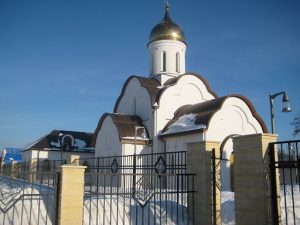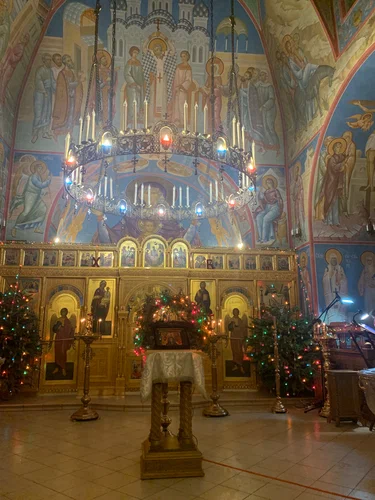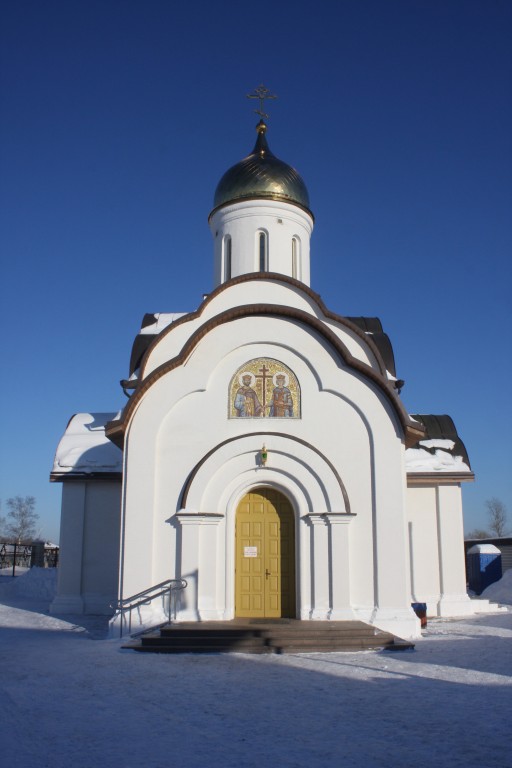Church of the Exaltation of the Holy Cross in Kryokshino

The Church of the Exaltation of the Holy Cross is dedicated to the great feast of the Exaltation of the Holy Cross in Krekshin on September 27. On this day, Orthodox Christians remember two important events related to the Life-giving Cross of the Lord. The first was the finding of the Cross in 326 in Jerusalem near Mount Golgotha, where the Savior was crucified. The second is the return of the Cross from Persia in the 7th century, where it was held captive. Both events are united by the solemn exaltation A cross in front of the people, which gave the name to the holiday — the Exaltation of the Precious and Life-giving Cross of the Lord. This holiday highlights the liturgical veneration of the Cross as an instrument of salvation for humanity. It is one of the twelve main holidays of the Orthodox calendar and is unique in that it is based not only on New Testament events, but also on later historical facts. The Feast of the Cross stands at the beginning of the church year (September 27), symbolizing the sacrifice of Christ, just as the Nativity of the Virgin (September 21) precedes the mystery of the incarnation of God. On this day, the Church calls on believers to reverently worship the Cross on which the Savior suffered for our salvation. The Cross of Christ is a symbol of victory over death, an instrument of peace and a path to heavenly bliss. In church hymns, the Cross is called a “stairway to heaven” and an “invincible victory.” The story of the Cross’s acquisition is connected with the name of St. Helena, the mother of Emperor Constantine the Great. In 326, she went to Jerusalem to find shrines related to the life of the Savior. After a long search and excavation at the site where the pagan temple of Venus used to stand, the Holy Sepulchre, the Place of the Head and three crosses were discovered. To determine which one belonged to Christ, Patriarch Macarius suggested attaching crosses to a seriously ill woman. Touching the third cross healed her, which confirmed its sanctity. The cross was erected in front of the people, and the faithful shouted: Tsarina Elena sent part of the Cross to Constantinople, and the rest was placed in a silver ark for storage in Jerusalem. However, in the 7th century, the shrine was captured by the Persians. Emperor Heraclius, having defeated his enemies, returned the Cross to Jerusalem in 628. According to legend, he carried a Cross on his shoulders, but stopped at the gates of Golgotha, unable to move on. The angel revealed to him that the Cross that Christ carried in humiliation could not be carried in royal robes. Heraclius took off his luxurious clothes and barefoot carried the shrine into the temple. The fate of the Cross in the following centuries remains unclear. It was probably divided into parts, which are now kept in various temples and monasteries around the world. For example, in Rome, in the Basilica of the Holy Cross, there is a wooden plaque that is considered part of a plaque with an inscription nailed over the head of the Savior. Today, on the feast of the Exaltation, we mentally worship the Cross, which remains a symbol of our faith and salvation. The cross of Christ reminds us of the sacrifice of the Savior, who offered himself as a gift for the sins of mankind. As it says in church hymns: “Come, believers, let us worship the life-giving tree, on which Christ, the King of glory, has spread out His hand, lifting us up to the first beatitude!”
Address: Krekshino village, Strawberry street, 333

